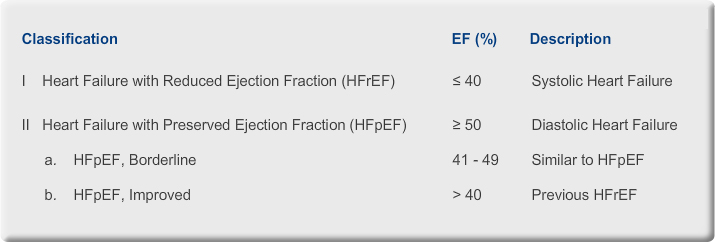Heart Failure Classification

Current heart failure classification definitions use the term heart failure with reduced ejection fraction or heart failure with preserved ejection fraction. Heart failure with reduced ejection fraction equal to or less than 40% is known as HFrEF and refers to systolic heart failure. Heart failure with preserved ejection fraction equal to or greater than fifty percent is known as HFpEF and refers to diastolic heart failure. One subset of HFpEF is borderline HFpEF with an ejection fraction of forty-one to forty-nine percent. These patients usually present with similar characteristics, treatment patterns and outcomes as patients with HFpEF. Another subset of HRpEF is improved HRpEF. These are patients with heart failure with reduced ejection fraction that now have improved ejection fraction.
Systolic dysfunction is characterized by a decrease in emptying, or contractility. It is associated with a reduced ventricular ejection fraction and dilatation. Whereas, diastolic dysfunction is characterized by reduced ventricular filling. It is associated with poor compliance, or increased stiffness, and hypertrophy.

